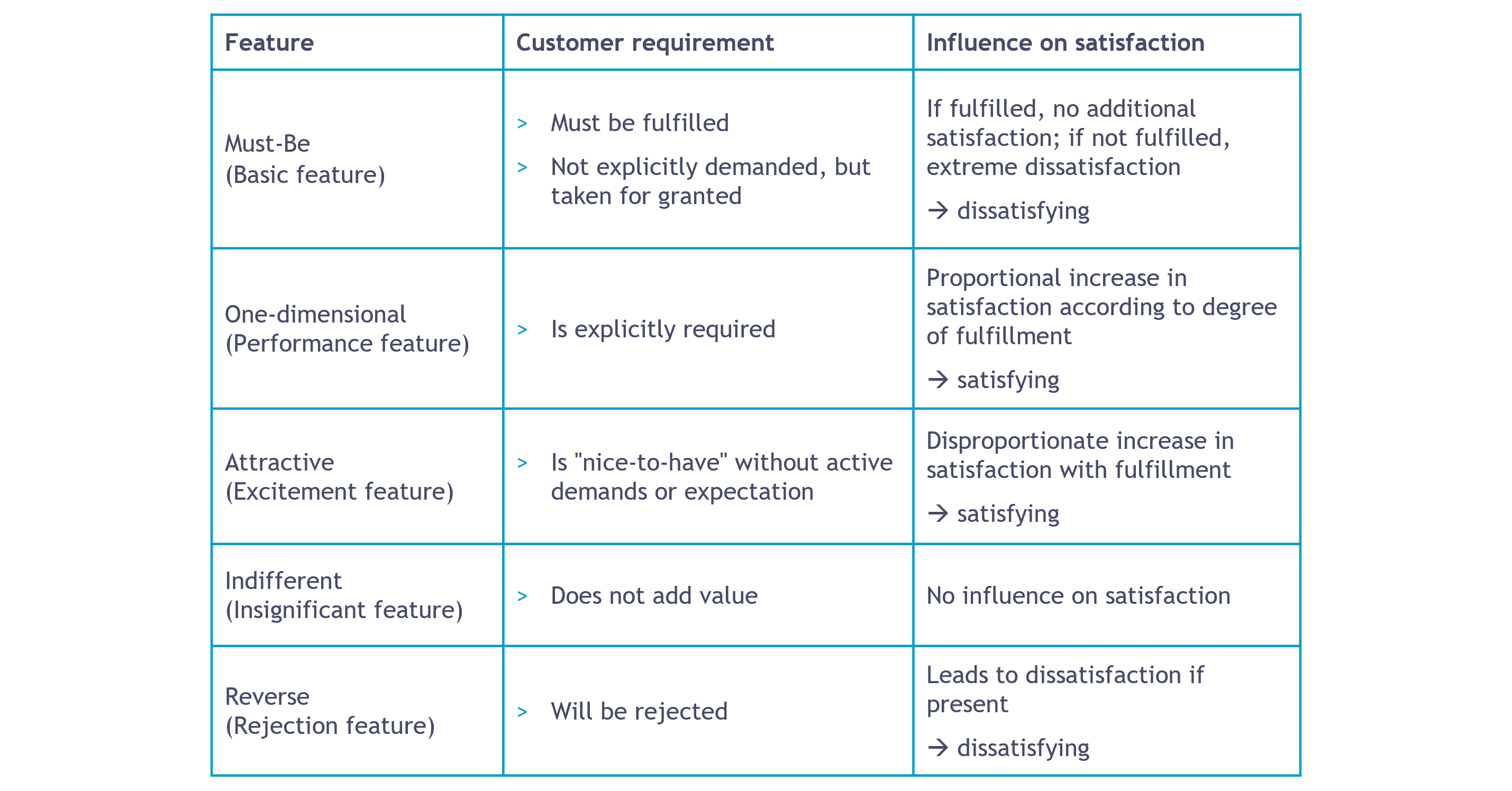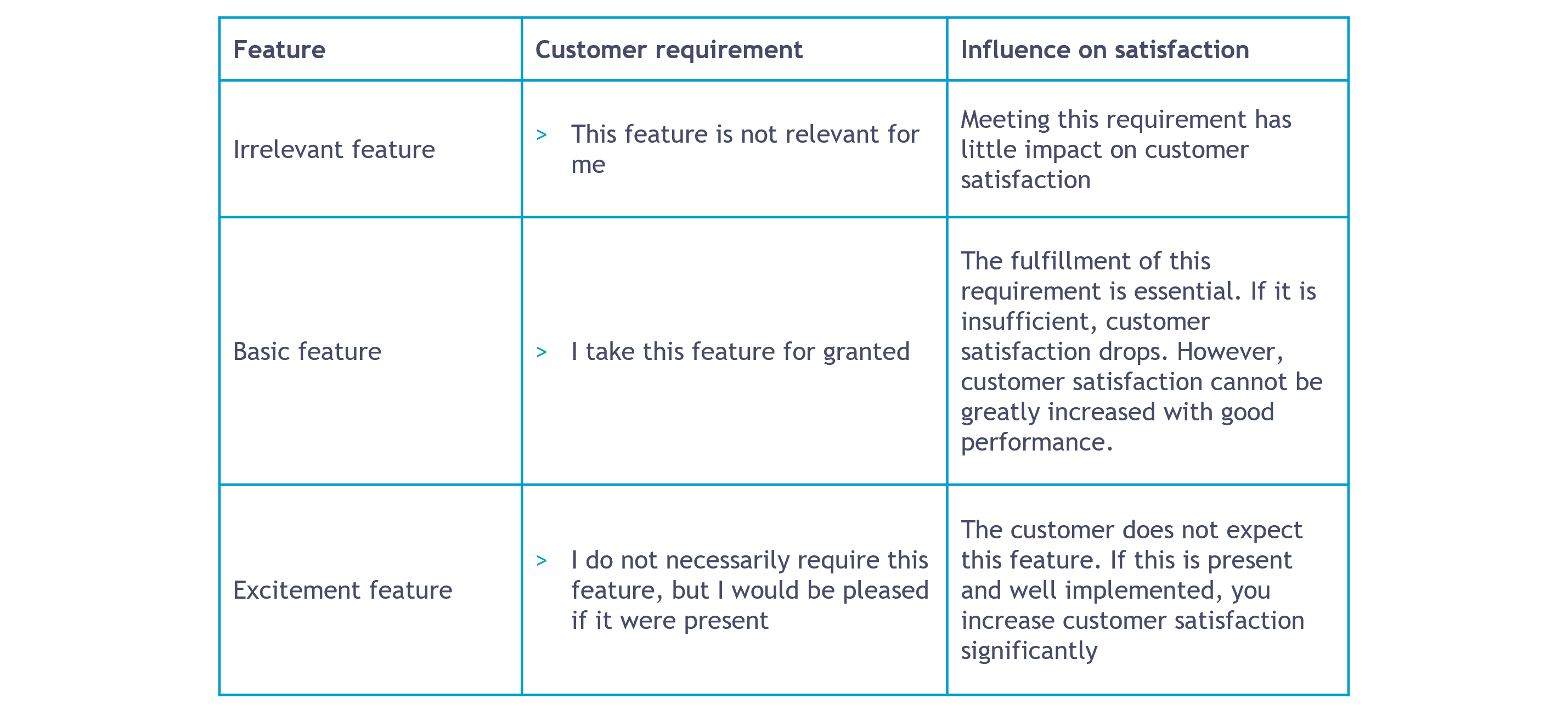Do you have a question?
Get in touch with me. Feel free to call me or send me an e-mail message. I look forward to the dialogue with you!
Especially in the case of complex products or services, the performance characteristics that influence customer benefit and customer satisfaction can be very diverse. The Kano model can be used to analyse the relationship between the individual characteristics of a product or service and customer satisfaction. This is named after Noriaki Kano, who researched customer requirements and customer wishes in Japan in the 1970s and related product features and their degree of fulfilment to customer satisfaction. His research showed that product characteristics can be divided into several groups, which are categorised as follows.

The empirical measurement of these characteristics is carried out by means of two questions, which can look as follows in a survey:
The answer categories to both questions are the same:
Each recorded characteristic of the product or service is then assigned to the characteristic categories described above according to a fixed key. Linking the degree of fulfilment with the type of characteristic makes it possible to estimate how overall satisfaction is influenced by a higher degree of fulfilment of individual quality criteria. This creates a very differentiated picture and a clear guide to action on how to deal with different product characteristics if customer satisfaction is to be increased.
In our experience, the use of the classical Kano model in practice has several problematic aspects: The questionnaire becomes relatively long, repetitive and complex. In addition, inconsistent statements by the respondents in the functional and dysfunctional questions are possible, which can lead to problems in the interpretation of the results. For this reason, intervista has designed a simplified model in which only 3 types of characteristics are collected in a simple matrix question and categorised directly by the respondents:

With such a simplified survey, you also get the information that is crucial for you about which services and products are relevant for customers. However, the questionnaire is much shorter and easier to answer, which has a positive effect on the survey costs, the completion rate and the quality of the survey. In addition, as with the Kano standard model, we measure the actual degree of fulfilment. By combining the degree of fulfilment with the categorisation into enthusiasm characteristics, basic characteristics and irrelevant characteristics, measures can be prioritised in a targeted manner.

Get in touch with me. Feel free to call me or send me an e-mail message. I look forward to the dialogue with you!